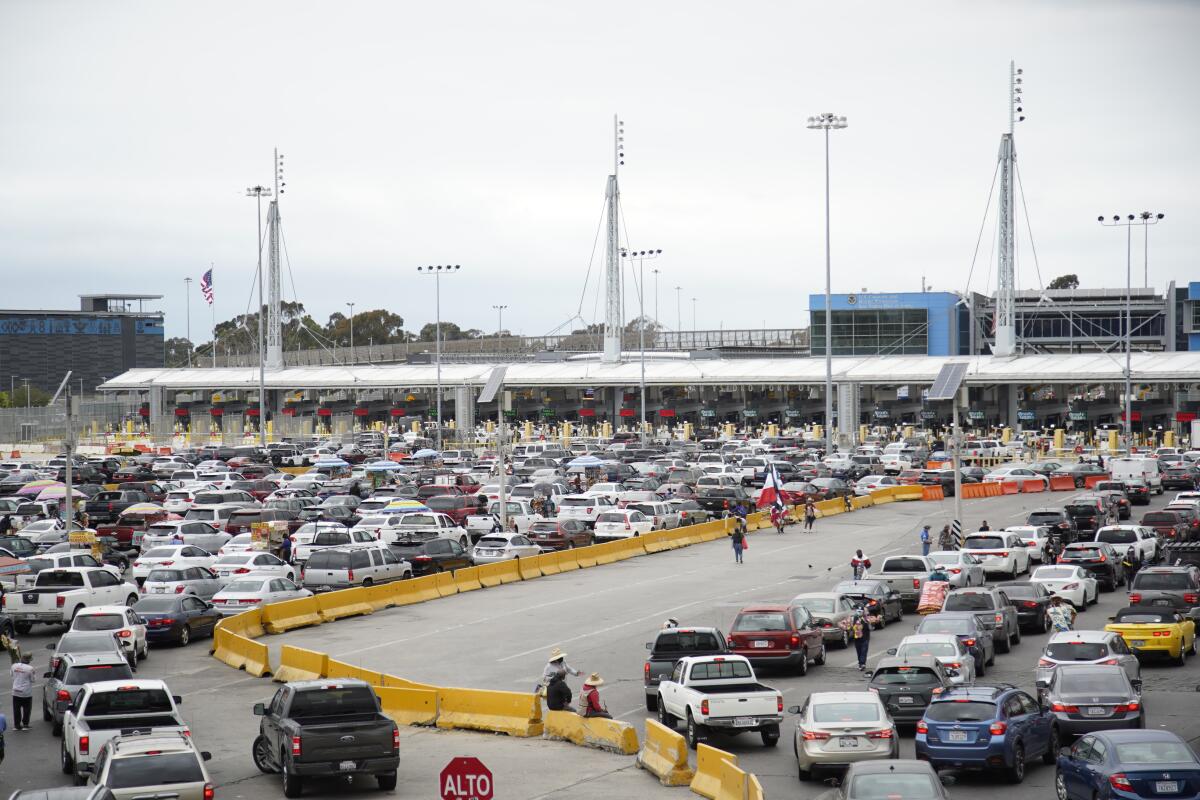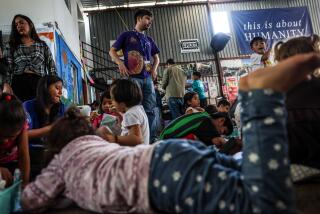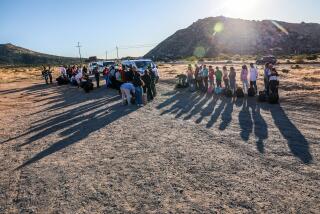Longer waits expected as land ports open Monday to vaccinated travelers from Mexico

U.S. authorities encourage travelers to have vaccine documents ready and to cross at non-peak hours if possible
SAN YSIDRO â Chula Vista resident SalomĂłn Maya has been trying to get to his cousinâs wedding since April 2020.
The ceremony has been postponed twice because of the COVID-19 pandemic, but this weekend the nuptials were finally taking place in Valle de Guadalupe in Baja California.
But with travel restrictions easing on Monday morning â and the potential for a rush of folks like himself eager to cross â Maya wondered whether heâll be waiting until April 2022 to get back into the United States after the wedding.
âCool. You picked the weekend the border finally reopens,â Maya, 41, joked about his cousinâs timing.
The long-anticipated reopening of the San Ysidro Port of Entry to tourism and family visits for travelers who are fully vaccinated comes after almost 20 months of restrictions because of the pandemic â and just before the busy holiday shopping season.
Border communities on both sides heaved a sigh of relief â while at the same time bracing for what could be very heavy traffic, long waits and crowds at the land ports.
âFor too long, restrictions at our border have separated families and devastated businesses that depend on cross-border trade,â said San Diego Mayor Todd Gloria.
The COVID-19 restrictions put into place in March 2020 have had enormous economic and social repercussions, especially on communities split by the border. In Mexico, the effects have been devastating on families that depend on the informal work often done during short day crossings into the U.S.
The restrictions have mostly kept Mexican citizens with visas or border crossing cards from visiting the United States. Thatâs because U.S. citizens like Maya and legal permanent residents canât be stopped from returning home to the United States after crossing into Mexico, regardless of their reason. Mexico never closed its northern borders to incoming visitors.
Still, Maya, an advertising executive, said he tried to abide by the rules and public health recommendations. A lifelong regular border crosser, he has been south only once since the restrictions against nonessential travel went into effect.
âThe border crossing has always been a temperamental monster in the sense that any kind of news happening on either side of the border will affect it,â Maya said. âItâs just such a roll of the dice.â
Businesses along the border have been severely affected by the travel restrictions, with 276 businesses in San Ysidro reportedly closing for good, according to Jason Wells, executive director of the San Ysidro Chamber of Commerce. He estimates businesses in the city lost $1.3 billion of sales to COVID-related restrictions on nonessential travel, and 2,200 jobs.
Wells and other public officials in border communities had advocated for the restrictions to be lifted sooner, saying they were left in place because those communities lack representation in Washington, D.C. Retail tourism was the second-biggest contributor to San Diegoâs economy before the pandemic.
âIf I go to Valle to have a glass of wine, is that essential?â Wells said. âOne would probably say itâs not, but the guy who filled up my tank of gas who feeds his kids by selling me gas, and the [border control] officer who checks me on the way back who feeds his kids by having me to check.... Weâve created a life based on border crossings â everything is essential.â
U.S. officials urged travelers to have their travel and vaccine documents readily available for border authorities to inspect in anticipation of longer-than-usual wait times at ports of entry on Monday, and through the week.
U.S. Customs and Border Protection is asking people traveling for nonessential reasons to avoid crossing at peak times. Peak hours are Monday through Friday from 4 a.m. to 9 a.m. and on Sundays from 2 p.m. until midnight, according to a CBP spokesperson.
The new rules apply only to legal entry. Those who enter illegally will continue to be subject to expulsion under a public health measure that allows for the swift removal of migrants, including those seeking asylum.
Travelers entering the U.S. by vehicle, rail and ferry will be asked about their vaccination status as part of the standard CBP inspection. At officersâ discretion, travelers will have their proof of vaccination verified in a secondary screening process. Unvaccinated children under 18 will be allowed to enter if they are traveling with a fully vaccinated adult, border authorities said this week.
Flying into the U.S. requires proof of a negative COVID-19 test. No testing will be required to enter by land or sea, provided the travelers meet the vaccination requirement.
According to the Centers for Disease Control and Prevention, the U.S. will accept travelers who have been fully vaccinated with any of the vaccines approved for emergency use by the World Health Organization, not just those in use in the U.S.
Some Mexican nationals, particularly schoolteachers, have received vaccines that do not have WHO authorization, such as Sputnik V developed in Russia or the CanSino vaccine from China. Those who have been inoculated with those vaccines will be turned away.
More information is available on the Department of Homeland Securityâs fact sheet.
Carlos Guerrero, owner of the Elite Tactical store in San Ysidro, said at first he couldnât believe the border was finally reopening. He recently relocated his business from Chula Vista to San Ysidro to capture more cross-border traffic.
Guerrero sells tactical equipment, boots and holsters, among other accessories, often purchased by police officers from Mexico.
âI hope that sales will go up a lot, both with the Mexican clients that I had before and with new clients, since now I am closer to the line,â Guerrero said.
The Associated Press and special correspondent Yolanda Morales in Tijuana contributed to this report.
More to Read
Sign up for Essential California
The most important California stories and recommendations in your inbox every morning.
You may occasionally receive promotional content from the Los Angeles Times.











